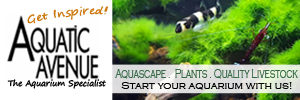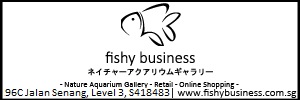Re: WTB: Pseudepiplatys annulatus
Hi Garrett and Ron,

Originally Posted by
RonWill
Hi Garrett, before you 'get hold' of the annulatus, how prepared are you to care for them?
If you think you've done your 'homework', meet me tomorrow and you might walk away with a juvenile pair of home-raised ANNs.
Interested? :wink:
My US$0.02... [I like ANN a lot!]
ANN are easier than many folk think. You can't pick and handle the eggs, like many killies, as that usually kills them, IMHO. They won't take bbs when hatched, so you need to know how to provide a combination of healthy microfoods and hiding cover.
The parents ignore new hatchlings, but juveniles are predatory, so you need to pull new babies soon before they grow up enough to eat little sister.
I have had good production with a 10G tank with several pairs in soft, acid water. Fibrous peat substrate and floating water sprite give spawning medium and hiding space. Java moss added structure. Lots of plants host lots of rotifers, etc. so the early food becomes automatic in a tank that big. I like to add a squirt of "green water" (Euglena sp.) to be sure they are fed well. APR would also be good in very tiny amounts
The babies have a bright reflective "headlight" above the eyes, so are easy to see from above and scoop out with a chinese takeaway spoon. They are so tiny they are hard to see from the side, and they hide way up in the meniscus.
Good luck, Garrett,
Wright
01 760 872-3995
805 Valley West Circle
Bishop, CA 93514 USA









 Reply With Quote
Reply With Quote







Bookmarks